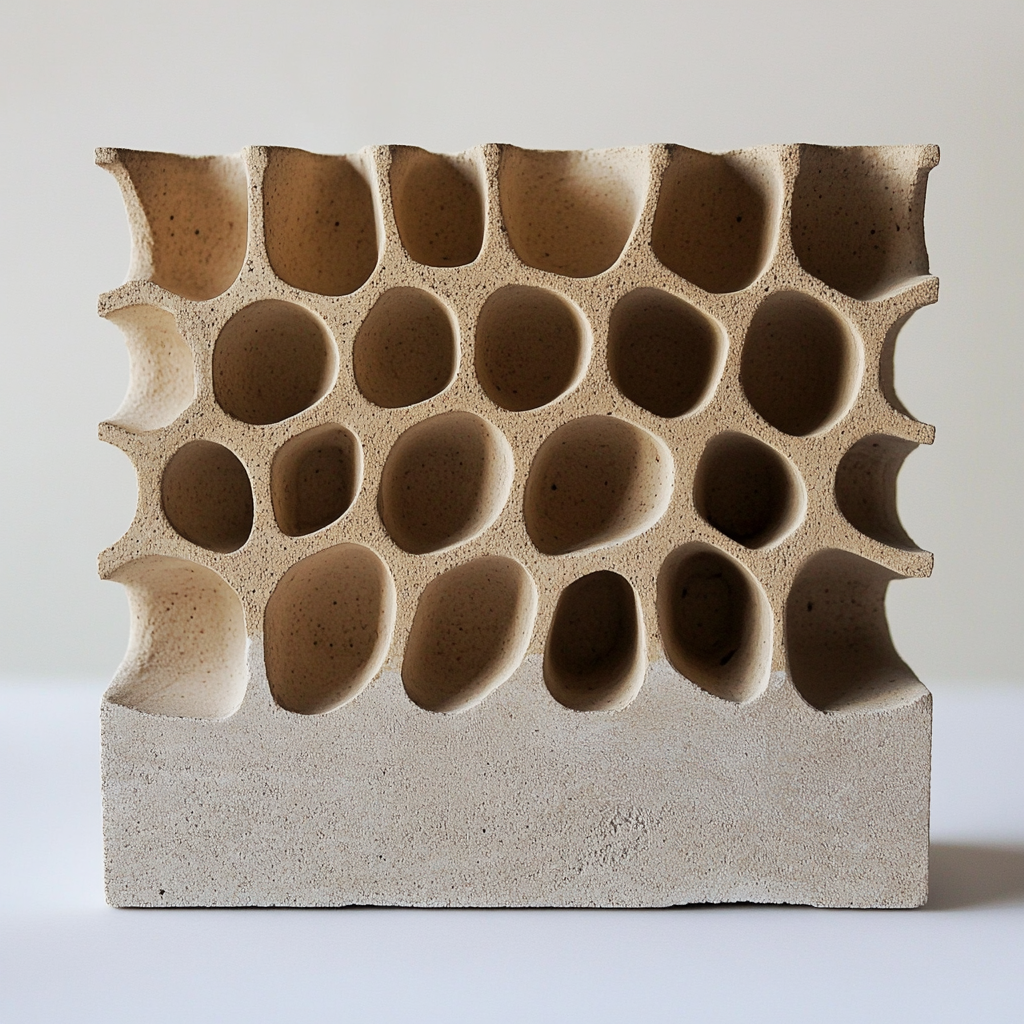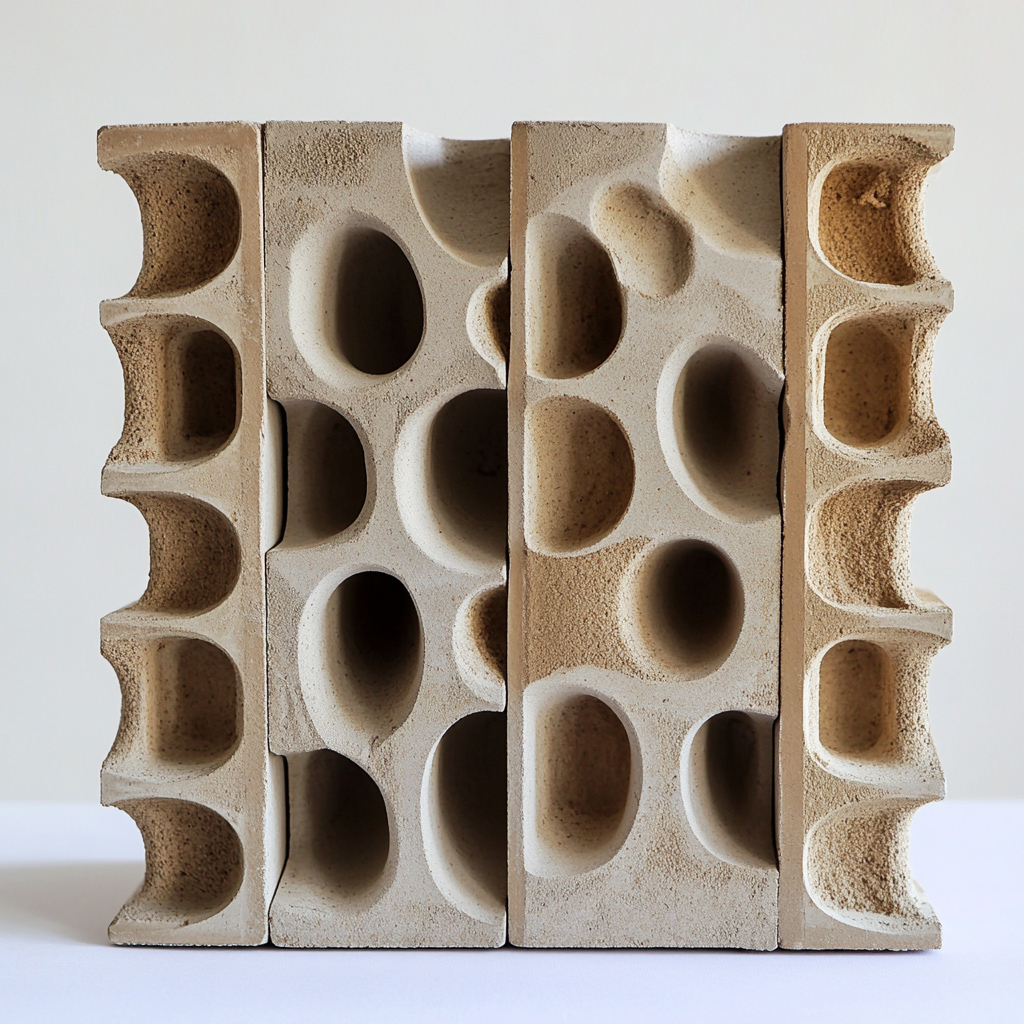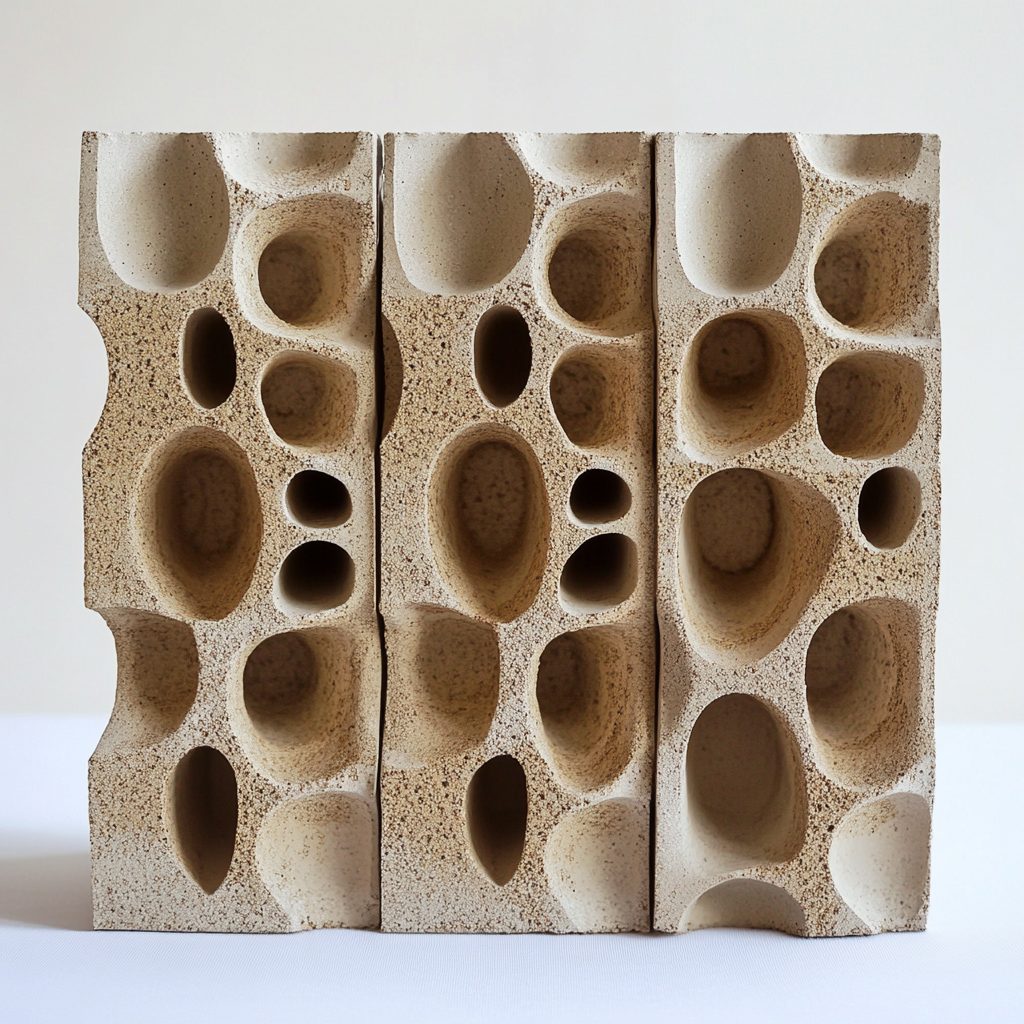Porous Arc.
Porous Prototyping offers a more performative and adaptive approach to both small-scale and large-scale architectural components. It enables designers to test beyond static form to explore material lifecycles, climate interaction, and how space can be inhabited through the void.
Task
Building an internal tool of this scale is no small feat, but with the right approach, it can be a powerful force for uniting a company.
-
Strategy
Prototyping
-
Design
Form Exp
-
Client
Internal R+D
Porosity as a spatial + structural strategy.
The following research uses a series of experimental prototypes to investigate how perforated, porous forms inspired by ceramic biomorphologies can function as performative building envelopes, modular systems, and structural interventions. This study explores a material-driven design methodology that merges traditional craft with contemporary experimentation.
Natural Materials + Modern System
By engaging directly with raw earth, plant fibres, and other vernacular systems, architecture becomes both a technical and cultural act regenerative, site-specific, and deeply human. This approach offers recalibration and proposes an architecture shaped not by signature or spectacle, but by soil conditions, labour cultures, and the rhythms of local supply.
These prototypes don’t just function; they negotiate, adapt, and remember. In doing so, they shift architecture from consumption to consequence quietly reframing what it means to build with integrity in a world that demands more care than control.



Observational Analysis: Biomorphic Clay Assemblies
The prototypes reveal a series of intricately crafted ceramic modules, each defined by a fusion of eroded voids, subtle surface depressions, and tactile grain variation. These components embody porosity not as aesthetic embellishment, but as performative infrastructure inviting light, air, and sound to pass through their cavities in ways that imply possibilities for passive ventilation, acoustic modulation, and ambient light diffusion.
The textures are cast with intention, ranging from smooth, refined planes to granular, weathered edges hinting at production methods involving mechanical abrasion, hydro-forming, or slip-mould erosion techniques. The formal language draws clear parallels with biological systems sponges, coral, and mineral growths suggesting an ethos of biomimicry in both design and environmental function.
These elements are not merely decorative; they propose a material intelligence that could enable microhabitat creation, evaporative cooling, or even natural air filtration within architectural assemblies.
By grounding architecture in materials that resonate with place geologically, climatically, and socially we reveal a poetics of construction. These blocks are not mere modules, but vessels of embedded knowledge. Their irregularities chart a temporal evolution; their permeability speaks to a state of openness rather than control. Their surface invites encounter, resisting detachment in favour of tactile engagement.
Materials and Experimental Approaches
The material strategies emerging here mark a convergence between ecological intelligence and architectural innovation where composition is driven as much by environmental performance as by formal intent. Bio-ceramic aggregates, for example, combine clay-based matrices with volcanic ash, hemp fibres, or calcium carbonate to balance porosity with compressive strength offering breathability without sacrificing structural resilience.
Geopolymer-clay hybrids extend this trajectory, forming chemically bonded mineral lattices at ambient temperatures to deliver low-carbon alternatives to traditional cement-based systems. In parallel, compressed earth infusion techniques explore modular assemblies shaped through CNC carving or foam-cast subtraction, yielding integrated ventilation channels that serve both as environmental regulators and spatial dividers.
These perforated volumes articulate air as a spatial medium, blurring the boundaries between wall, system, and atmosphere.
Other prototypes engage the notion of material impermanence and lifecycle multiplicity. Salt crystal and mycelium pairings, for instance, explore dual temporalities where fungal growth envelopes a salt framework that may either be kiln-fired for permanence or left to decompose, foregrounding the architecture’s return to earth.
Hybrid 3D printing methods build on this logic, extruding earth- or clay-based pastes with voided geometries reinforced by fibre slips or textile meshes, achieving lightweight modules that are both high-performance and materially expressive.
The resulting geometries offer more than structural utility they operate acoustically, irregularly diffusing sound across their complex surfaces. This quality proves particularly valuable in dense communal programs such as theatres, auditoria, and ritual enclosures. Collectively, these material systems propose an architecture that is adaptive, porous, and performative one that listens, breathes, and endures as an extension of both place and process.
From Brick to Breather: Functional Potentials
These modular systems propose a redefinition of envelope performance where each element serves more than one role, responding dynamically to climate, program, and context.
Unlike conventional masonry, the ventilated thermal mass assemblies integrate voids not as formal gestures but as climatic instruments regulating airflow through passive channels while storing and releasing thermal energy. This makes them particularly suited to arid environments, where managing heat gain and retention is critical to occupant comfort and energy efficiency.
The inherent modularity of the system allows for flexible application across facade typologies whether as perforated light screens, movable partitions, or adaptive exterior skins. Each block, through variation in orientation, aperture, or depth, can be tuned to its solar exposure or interior function, turning the facade into an active regulator of light, privacy, and airflow.
Moreover, the porosity and surface geometry of these units introduce hydrological intelligence. In dryland urban contexts, the capacity to guide rainwater, absorb surface runoff, or slow drainage becomes a design asset supporting strategies for micro-irrigation, dust control, or greywater reuse.
Structurally, these components can shift roles depending on their material composition: at higher densities, they form load-bearing walls; at lighter weights, they become cladding systems or shell casings that wrap around timber or steel skeletons. This duality blurs the boundary between skin and structure, suggesting a material future where performance is not layered, but integrated.
Expanded Applications in Architecture
Desert Architecture
Modular porous skins that act as evaporative coolers and dust filters.
Educational Environments
DIY block systems used in community-driven schools or climate literacy spaces where materials teach.
Public Infrastructures
Thresholds that engage public tactility and bioclimatic response.
Monastic + Wellness:
Making a shor time up to date email campaings to achieve a real impact.